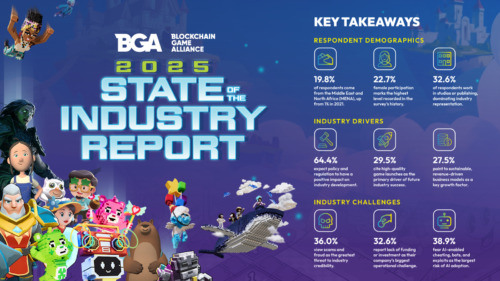The Impact of Blockchain Technology on Shareholder Participation in Corporate Governance

by Joseph Liu and Weiping He, Monash University.
The corporate governance structure in Australia largely gives power to those in senior positions and as a result many investors become disengaged with shareholder participation. For shareholders, it is necessary to receive efficient and accurate information to access shareholding rights and in order to participate in corporate decision-making, it is important that investors are assured they will receive appropriate information relating to the company that is verifiably correct.
Obtaining information as an investor can often be a costly and time-consuming process, and confidence in the outcome of meetings can be undermined by a lack of transparency.
When a company becomes public, maintaining shareholder records can become complex and difficult. This system is highly fallible and frequently results in communications being particularly time-consuming or not reaching shareholders at all. The voting process itself could be limited by incomplete ballot distributions and incorrect voter lists. In a procedure known as ‘empty voting’, some investors ‘may use borrowed shares to temporarily cast a vote in a company without suffering from the economic exposure to the financial risks in the price of its stock’. Such practices distort shareholding incentives and affect the balance of the vote for other shareholders.
Voting can be delegated to the president of the meeting, particularly where shareholders are dispersed and unengaged. Empowering the President necessarily favours existing management policies. To date these issues have not been met with sufficient regulation by policymakers.
The development of distributed ledger technology is perhaps the most significant innovation for company shareholders to date. Popularised by the invention of blockchain in 2008, distributed ledger technology refers to a peer-to-peer network of data spread across multiple nodes. Its key feature is the lack of a central administrator – instead, updates to the ledger are achieved by consensus. The correct record is replicated and updated on all nodes in the network.
This technology has since been used to register shares in early experiments, allowing investors and issuers to interact with each other more directly. In 2015, NASDAQ’s platform ‘Linq’ was the first use of distributed ledger technology to successfully complete a private securities transaction. In 2016, Overstock.com was the first public company to issue stock through a blockchain platform.
Following pilot phases of this technology, several governments have set up conditions for companies to further integrate distributed ledgers in stock management. In 2017, amendments to Delaware law allowed corporations to use blockchain technology to maintain stock ledgers and communicate with stockholders. Any records can be kept on electronic databases and communication between stockholders can take place electronically. France has allowed share registration via blockchain since 2017. The French Government has authorised the use of distributed ledger technology for the issuance and transfer of ‘mini-bonds’ and unlisted securities. Following this direction, the French international banking group BNP Paribas announced that it was ‘expanding its blockchain platform for private stocks’.
Distributed ledger technology has also transformed shareholder voting. In a distributed ledger system, tokens may be allocated to eligible voters, who would subsequently transmit their vote to be registered on the blockchain.
Permitted blockchain technologies can then be used to manage vote counting. NASDAQ has developed a successful e-voting platform on their Tallinn exchange to facilitate voting transparency and increase investor participation.
As of 2017, NASDAQ confirmed a functioning proof of concept identifying users based on their Estonian digital ID, allowing investors to view information about meetings and vote before or during the meeting, manage proxy votes and review previous meetings and transactions.
A similar scheme of electronic voting was announced by NASDAQ in November 2017 for South African capital markets. In the same year, Broadridge declared a successful test use of blockchain to complete proxy votes in a private transaction.
The pilot program demonstrated the capabilities of distributed ledger technology in providing ‘insight into vote progress throughout the issuer’s proxy voting period, from meeting announcement date to the annual general meeting’. The technology also allows for role-based access to voting data.
Even the world’s biggest stock exchanges have decided to incorporate distributed ledger technology in their transactions, with several outlining plans for overhauls of their core settlement systems. In 2018, the Shanghai Stock Exchange concluded that distributed ledgers had broad applicability in the securities industry, assisting in information disclosure, issuance and transfer, clearing and settlement, shareholder voting and dividend payment. The Australian Stock Exchange and Japan Exchange Group have also been investigating blockchain solutions for clearing, settlement and low-liquidity assets. The Japan Exchange Group has noted that securities transactions have broad potential to expedite the confirmation of information in the post-trade process.
As of 2019, the JPX Group had performed two proof of concept tests in collaboration with Japanese financial institutions. The ASX is developing a distributed ledger replacement to conduct post-transaction clearing and settlement activities, with the intention of facilitating greater accessibility and efficiency in the register. The project currently has a proposed go-live date of April 2022.
By offering an alternative to traditional database registers, blockchain technology has made company information readily accessible and more cost-effective. Complex information can be efficiently sourced from the register, stored indefinitely and timestamped. A blockchain system would be based on shareholder identity, allowing both open and pseudonymous ownership.
Voting information and tokens can be transmitted directly to investors without the need to ask each intermediary for the identity of their client. This information is effectively automatic.
As each change to the blockchain record is catalogued and verifiable, the expected benefits of blockchain for the voting process itself are also significant, promising greater accuracy and transparency. This acts as an incentive for more shareholders to directly participate at the annual general meeting, enhancing shareholder democracy and mitigating the effects of delegated voting. Both companies and shareholders would gain better understandings of shareholding. Using blockchain technology would also limit the use of ‘empty voting’ – providing transparent share registration and notice of changes to voting rights. This ensures that voting rights are aligned with economic interests. The consequence of these benefits is to vastly improve shareholder participation in corporate governance. These reforms will allow investors to have a direct say in meetings with greater ease and confidence.
Within a span of five years, the impact of technology on companies has been exponential. Though distributed ledgers are still being developed in company settings, the promise of emerging technology is persistent. Successive pilot programs tell us that the concepts work, and that the possibilities to enhance accessibility and efficiency for shareholders are substantial and significant. The modern company is changing – and technology will play a key role in driving its evolution. Marginalised shareholders now have an opportunity to benefit from technological improvements to transparency and participation.
Lecturer, Weiping He
Weiping He is a lecturer at Monash Law Faculty. Her research interests primarily lie in the areas of financial services regulation (securities markets and banking) and corporate law. She is interested in how regulatory regimes differ in terms of nature and dynamics as a result of varied historical, political and economic circumstances and in particular how regulatory regimes could work better. Her research also incidentally attempts to evaluate the proper role of government vis a vis the market, for example in assessing the efficiency of various regulatory regimes and the competence and effectiveness of regulators.
Assoc Professor and Director of the Monash Blockchain Technology Centre, Joseph Liu
Joseph Liu is an Associate Professor in the Faculty of Information Technology, Monash University. He got his PhD from the Chinese University of Hong Kong in 2004. Before joining Monash in 2015, he worked as a research scientist at the Institute for Infocomm Research (I2R) in Singapore for more than seven years. His research areas include cybersecurity, blockchain, IoT security, applied cryptography and privacy-enhanced technology. He has received more than 6500 citations with more than 200 publications in top venues such as CRYPTO, ACM CCS. Joseph is currently the lead of the Monash Cybersecurity Group. He established the Monash Blockchain Technology Centre in 2019 and serves as the Centre Director. His remarkable research in linkable ring signature forms the theory basis of Monero (XMR), one of the largest cryptocurrencies in the world with current market capitalization more than US$1 billion. Joseph received the 2018 Dean’s Award for Excellence in Research Impact. He was also named the 2018 ICT Researcher of the Year by the Australian Computer Society (ACS), the largest national professional body representing the ICT sector, for his contribution to the blockchain and cybersecurity community.






